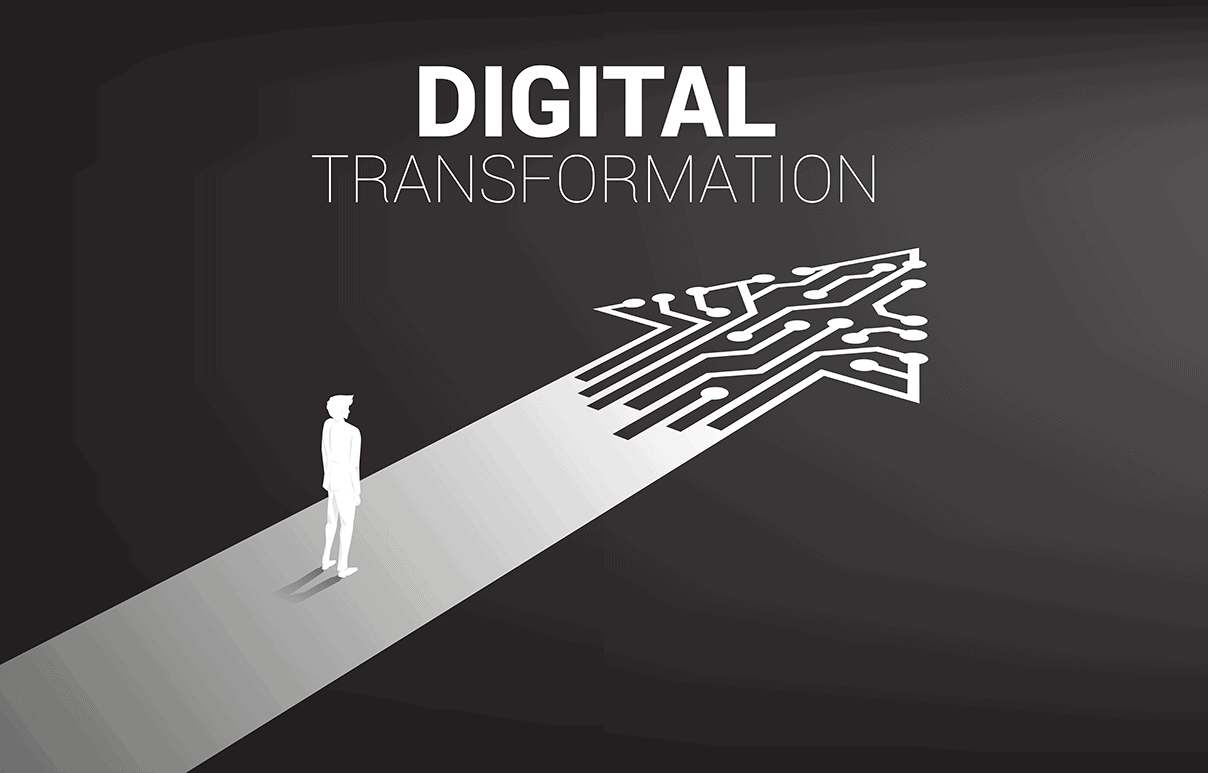This week, why change management skills are essential to data-driven success.
Welcome to The Digital Eye, your weekly roundup of the latest technology news.
Our team of experts has scoured the internet for the most exciting and informative articles so that you can stay up-to-date on Digital, Data, Blockchain, AI & Analytics, and Digital Transformation.
- Six problem-solving mindsets for very uncertain times
- Why Business Survival Requires Brand New Management
- 3 examples of how low-code benefits insurance digital transformation
- Will embedded insurance become the future of the industry?
- Artificial Intelligence Needs To Speak The Language Of Business, Not The Other Way Around
We hope you find this information valuable and would appreciate your help sharing it with others who may be interested.
4 valuable areas of digital transformation in 2023 for Insurance, 3rd one is the best
This article looks at the four most valuable areas of Digital Transformation in Insurance in 2023 and how businesses will create better customer experiences with digital transformation.
Six problem-solving mindsets for very uncertain times
Even the most inscrutable problems have solutions—or better outcomes than have been reached so far. Here’s how the best problem solvers crack the code.
Great problem solvers are made, not born. That’s what we’ve found after decades of problem solving with leaders across business, nonprofit, and policy sectors. These leaders learn to adopt a particularly open and curious mindset, and adhere to a systematic process for cracking even the most inscrutable problems.
They’re terrific problem solvers under any conditions. And when conditions of uncertainty are at their peak, they’re at their brilliant best.
Six mutually reinforcing approaches underly their success: (1) being ever-curious about every element of a problem; (2) being imperfectionists, with a high tolerance for ambiguity; (3) having a “dragonfly eye” view of the world, to see through multiple lenses; (4) pursuing occurrent behaviorand experimenting relentlessly; (5) tapping into the collective intelligence, acknowledging that the smartest people are not in the room; and (6) practicing “show and tell” because storytelling begets action (exhibit).
Why Business Survival Requires Brand New Management
If leaders or consultants are acting without a diagnostic tool that can produce truly relevant insights, they risk making the effects of market disruption worse.
Most of today’s major corporations are suffering from a lethal disease. The disease isn’t Covid. It’s much more deadly, in part because its symptoms are often invisible to those suffering from it. It is destroying productivity, crimping innovation, demoralizing workers, and leading to steady decline. The malady—untreated—is giving capitalism itself a bad name.
The disease is industrial-era management. It is management that can’t adapt to the fast pace and rapid change of the emerging digital age, in the shadow of an economic recession.
3 examples of how low-code benefits insurance digital transformation
We’re now seeing a shift taking place where insurers from across the spectrum are embracing tools like low-code platforms to accelerate their digital transformation initiatives.
The insurance industry is probably not the first industry you think of when it comes to the rapid embrace of technology. However, few market sectors are as ripe for technology-fueled disruption. Despite its risk-averse reputation, the industry is experiencing an influx of new competitors all vying for a piece of the trillion-dollar insurance pie.
In personal auto insurance, a growing roster of insurtech upstarts like Lemonade, which acquired Metromile, are leveraging in-vehicle telematics alongside other digital-native capabilities to lower premiums and improve the customer experience, putting new pressure on market incumbents.
Will embedded insurance become the future of the industry?
Insurers must update their back-end technology systems in order to seamlessly integrate with customer-facing partner brands.
Many in the insurance industry see embedded insurance as the logical next step in the industry’s evolution. Proponents argue that with its promise to disrupt insurance distribution, embedded insurance will be a major growth driver.
As the market develops, we have seen a number of major consumer brands, from Tesla to IKEA and Uber, begin to embed insurance into their offerings. However, some insurers are understandably sceptical when it comes to embedded insurance as their brand could become invisible behind the customer-facing brand depending on how the embedded insurance offering is presented and sold.
Artificial Intelligence Needs To Speak The Language Of Business, Not The Other Way Around
We are trying to teach business users to speak AI instead of teaching AI to speak business.
Almost every business leader on the planet, 94%, believe AI will be critical to success over the next five years. Still, as Deloitte’s latest research on the state of AI finds, many companies still aren’t achieving the value they anticipated — there has been a 29% increase in the share of respondents who identify as AI “underachievers” this year as compared to the last year.
Issues diminishing the impact of AI include challenges improving its business value and a lack of full executive commitment, the Deloitte survey shows. Industry leaders and observers in the trenches agree that it is these organizational issues, rather than technical issues, that are holding back progress.
Change is never easy. We often resist it even when we know it can lead to positive outcomes. Journalist and author Sydney J. Harris summed up our awkward relationship with change when he stated, “Our dilemma is that we hate change and love it at the same time; what we really want is for things to remain the same but get better.” Unfortunately, it’s not possible to progress or evolve without changing your strategies or tactics.
Today, data is posed to fundamentally transform the way businesses operate; however, it hasn’t done so at the pace that everyone anticipated. In the NewVantage Partners (NVP) 2022 annual executive survey, only 26.5% of surveyed companies reported they had created a data-driven organization.
Over the past six years, this percentage has fallen from a high in 2017 of 37.1% to a low of 24.0% in 2021. Instead of seeing more companies becoming data-driven, almost three-quarters of companies are still struggling to embrace data.



